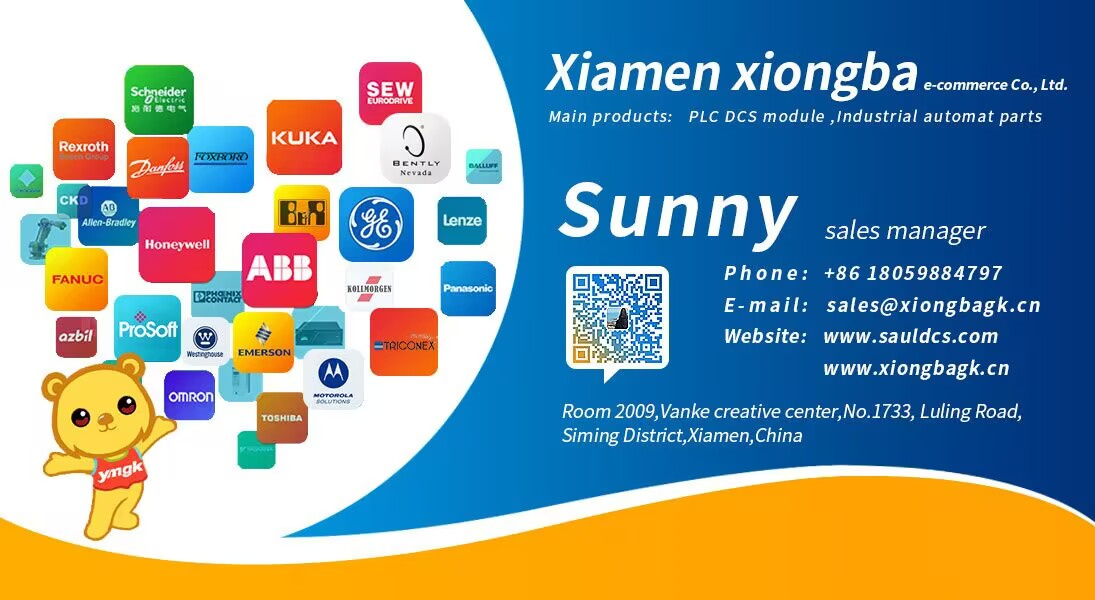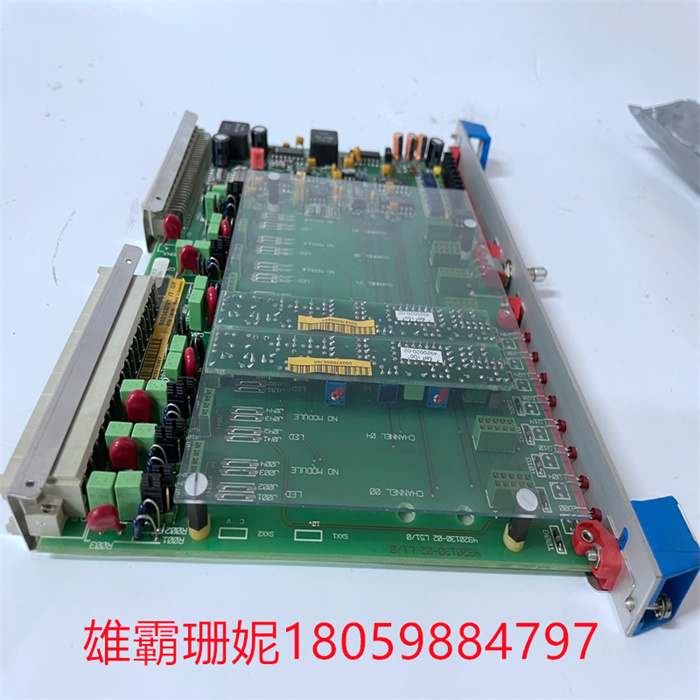ABB IBA 940143201 模拟输入板
ABB IBA 940143201 模拟输入板
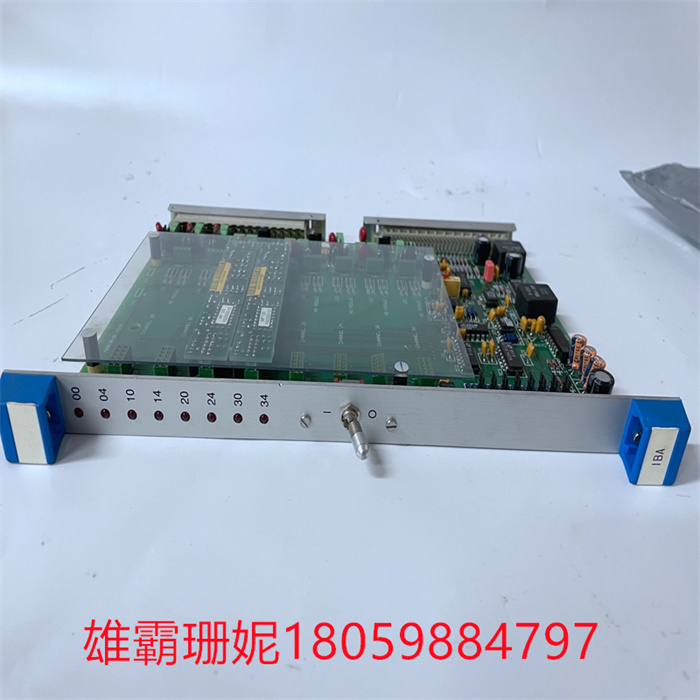
ABB在其产品系列中增加了另一种 紧凑的无外壳运动控制器 运动控制器非常适合集成到设备制造和医疗技术应用中。在 36 V 和 3 A(峰值电流 9 A)的情况下,它涵盖的功率范围高达约 100 W,适用于带编码器的直流电机、无刷驱动器或直线电机。
微型电机和微型电机只有与匹配的运动控制器结合使用才能成为可靠的驱动系统。这就是为什么驱动 ABB(见公司框)提供的 电机系列包括多种运动控制器选择,这些运动控制器设计为不同功率等级,带或不带外壳,适用于各种应用。现在,无外壳运动控制器系列又添新成员:MC3603(图 1),由于其紧凑的尺寸,非常适合集成到设备制造和医疗技术应用中 运动控制器具有 36 V 和 3 A(峰值电流 9 A),覆盖中等功率范围,可达约。100 W。适用于带编码器的“普通”直流电机、无刷驱动器和直线电机。I/O 选项和编码器接口与该产品系列的其他产品相同。USB、RS232、CANopen 和 EtherCAT 可用于通信。运动控制器已经有了新的固件版本“M”。为确保简单方便的系统设置,应使用 FAULHABER 运动管理器的 新更新(6.9 版)。
适用于所有运动控制器的 EMC 兼容设计
随着 MC 3603 的推出,运动控制器现在涵盖了微型电机和微型电机的整个典型应用范围(图 2),从邮票尺寸的 MC 3001 开始,具有 30 W 和 1 A(峰值电流 2 A)直到 MC 5010,该系列中的成员具有 10 A(峰值电流 30 A),专为安装在开关柜中而设计,主要在工业领域进行了试验和测试。所有运动控制器都符合当前的 EMC 规定。这就是为什么驱动 们非常详细地探讨了这个复杂的话题。不仅硬件得到了适当的优化,文档也经过了重新设计,为用户在自己设备的认证过程中提供的支持。
ABB IBA 940143201 模拟输入板
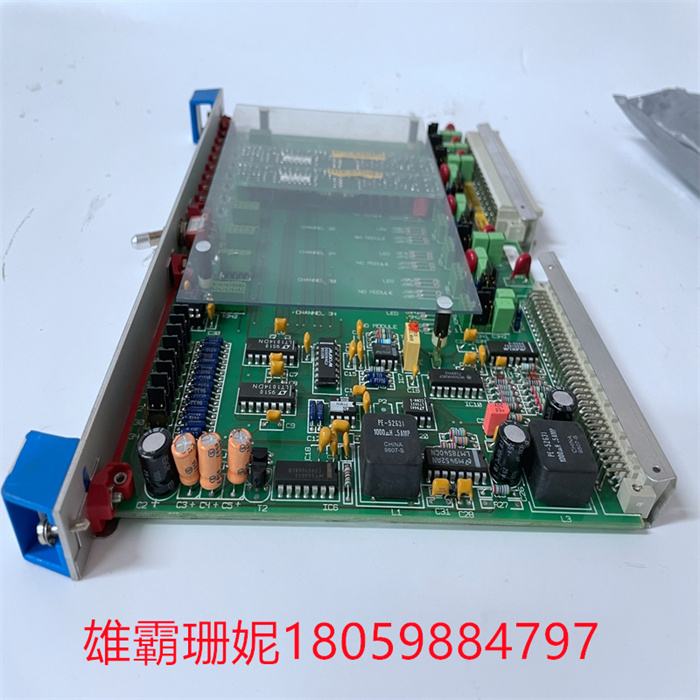
混合励磁电机的调速特性 混合勵磁同步电动机作为一种新型永磁电机,同时具备永磁同步电动机高功率密度和高效率的优点,以及电励磁同步电动机气隙磁场易于调节的特点。提出了一种混合磁极式的混合励磁同步电动机,推导了该混合励磁同步电动机的数学模型,得到了混合励磁同步电动机定子电流矢量轨迹 混合励磁电机的调速特性取决于其励磁方式和控制方法。 对于混合励磁电机来说,其永磁体和励磁线圈都可以提供磁场,因此它的励磁方式可以分为串联励磁和并联励磁两种。 对于串联励磁的混合励磁电机来说,其调速特性与传统的串联励磁直流电机类似,即随着电枢电流的变化,电机的转矩和转速也会相应地变化。但与传统的串联励磁直流电机不同的是,混合励磁电机的转子是永磁体,因此其反电动势随着转速的增加而线性增加。这就需要根据转速来调整电枢电流,以保持电机的转速稳定。 对于并联励磁的混合励磁电机来说,其调速特性与异步电机类似,即其转速随着负载的变化而发生变化,但其效率和功率因数要比异步电机高。在控制上,可以通过控制电机的励磁电流来实现转速的调节。 总的来说,混合励磁电机具有良好的调速特性和高效率、高功率因数等优点,但其调速和控制方法相对于传统的电机会更加复杂。 混合励磁电机是电励磁同步电机和永磁同步电机的合成,因此,在忽略漏磁和磁饱和的情况下,气隙内的磁链是永磁磁动势产生的磁链和电励磁磁动势产生的磁链的合成。
ABB IBA 940143201 模拟输入板
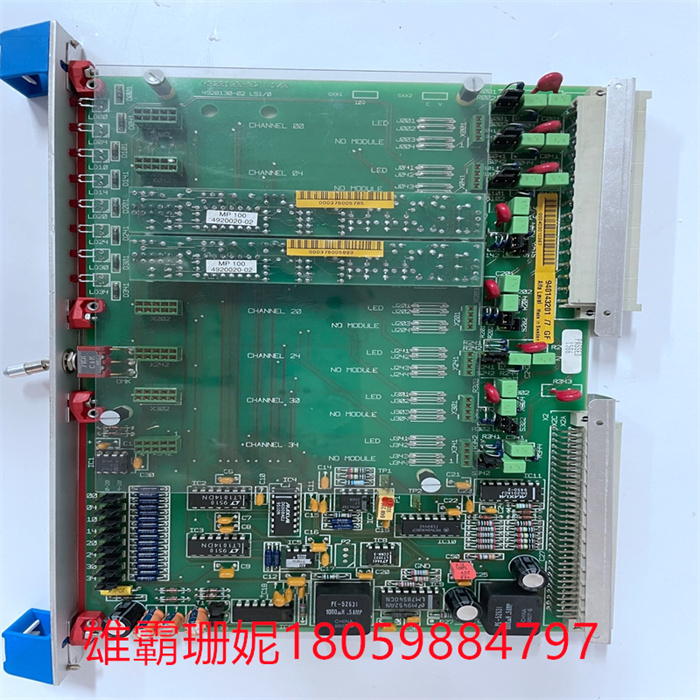
ABB has added another compact shell-less motion controller to its product line, which is very suitable for integration into equipment manufacturing and medical technology applications. At 36 V and 3 A (peak current 9 A), it covers a power range of up to about 100 W, and is suitable for DC motors with encoders, brushless drives or linear motors.
Micro-motors and micro-motors can become reliable driving systems only when they are combined with matched motion controllers. This is why the motor series provided by Driving ABB (see company box) includes a variety of motion controllers, which are designed for different power levels, with or without housings, and are suitable for various applications. Now, a new member has been added to the series of shell-less motion controllers: MC3603 (Figure 1). Because of its compact size, it is very suitable to be integrated into equipment manufacturing and medical technology applications. The motion controller has 36 V and 3 A (peak current 9 A), covering a medium power range, which can reach about. 100 W。 Suitable for "ordinary" DC motors with encoders, brushless drives and linear motors. I/O options and encoder interfaces are the same as other products in this product family. USB, RS232, CANopen and EtherCAT can be used for communication. The motion controller has a new firmware version "M". In order to ensure simple and convenient system setup, the new update of FAULHABER Motion Manager (version 6.9) should be used.
EMC Compatible Design for All Motion Controllers
With the introduction of MC 3603, the motion controller now covers the whole typical application range of micro-motors and micro-motors (Figure 2), starting from the stamp-sized MC 3001, with 30 W and 1 A (peak current 2 A) until the MC 5010. The members in this series have 10 A (peak current 30 A), which is specially designed for installation in switchgear, and has been tested and tested mainly in the industrial field. All motion controllers comply with current EMC regulations. This is why drivers have discussed this complicated topic in great detail. Not only the hardware has been properly optimized, but also the document has been redesigned to provide support for users in the authentication process of their own equipment.
ABB IBA 940143201 模拟输入板
Speed regulation characteristics of hybrid excitation motor As a new type of permanent magnet motor, hybrid excitation synchronous motor has the advantages of high power density and high efficiency of permanent magnet synchronous motor, and the air gap magnetic field of electrically excited synchronous motor is easy to adjust. A hybrid excitation synchronous motor with mixed magnetic poles is proposed, and its mathematical model is deduced. It is concluded that the speed regulation characteristics of hybrid excitation synchronous motor with stator current vector trajectory depend on its excitation mode and control method. For hybrid excitation motor, both permanent magnet and excitation coil can provide magnetic field, so its excitation mode can be divided into series excitation and parallel excitation. For the series-excited hybrid excitation motor, its speed regulation characteristics are similar to those of the traditional series-excited DC motor, that is, with the change of armature current, the torque and speed of the motor will change accordingly. However, unlike the traditional series excitation DC motor, the rotor of hybrid excitation motor is a permanent magnet, so its back electromotive force increases linearly with the increase of rotating speed. Therefore, it is necessary to adjust the armature current according to the rotating speed to keep the rotating speed of the motor stable. For the hybrid excitation motor with parallel excitation, its speed regulation characteristics are similar to those of asynchronous motor, that is, its speed changes with the change of load, but its efficiency and power factor are higher than those of asynchronous motor. In control, the speed can be adjusted by controlling the excitation current of the motor. Generally speaking, hybrid excitation motor has good speed regulation characteristics, high efficiency and high power factor, but its speed regulation and control methods will be more complicated than traditional motors. Hybrid excitation motor is a combination of electrically excited synchronous motor and permanent magnet synchronous motor. Therefore, the flux linkage in the air gap is a combination of the flux linkage generated by permanent magnet magnetomotive force and the flux linkage generated by electrically excited magnetomotive force when the leakage and saturation are ignored.
ABB IBA 940143201 模拟输入板

